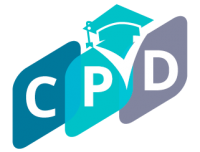Introduction:
In the realms of brainstorming and studying, traditional linear note-taking can sometimes fall short in capturing the complexity of ideas and connections between concepts. Mind mapping, a visual representation of thoughts and ideas, offers a dynamic alternative that stimulates creativity and enhances understanding. In this article, we will explore the concept of mind mapping and delve into its applications for brainstorming and studying, unleashing the full potential of creative thinking.
- Understanding Mind Mapping: A mind map is a visual diagram that represents concepts, ideas, and relationships in a non-linear format. Typically centered around a central theme or topic, a mind map branches out into subtopics, connecting ideas with lines, colors, and keywords. This visual representation mirrors the way our brains naturally organize information, making it a powerful tool for brainstorming and studying.
- Brainstorming with Mind Maps: Mind mapping is an invaluable technique for brainstorming, providing a flexible and visually stimulating platform for generating ideas. Whether you’re tackling a creative project, problem-solving, or planning, mind maps encourage free-flowing associations, allowing ideas to unfold organically. Start by placing the central theme or main idea in the center of the page. Branch out with subtopics or related concepts, using lines and keywords to connect them. As ideas emerge, continue expanding the map, exploring associations and linking related thoughts. The visual nature of mind maps facilitates a holistic view of the brainstorming process, fostering creativity and uncovering innovative connections.
- Enhancing Creativity through Visual Elements: Mind maps leverage visual elements to enhance creativity. Use colors, images, and symbols to represent ideas, adding a layer of visual stimulation to the brainstorming process. Visual elements engage different parts of the brain, sparking creativity and making the exploration of ideas a more immersive and enjoyable experience.
- Organizing Ideas Hierarchically: Mind maps provide a hierarchical structure that mirrors the way our brains naturally organize information. The central theme acts as the core, with branches representing main topics and subtopics extending outward. This hierarchical organization enables a systematic exploration of ideas, ensuring a comprehensive and structured approach to brainstorming.
- Facilitating Idea Association: Mind maps excel at facilitating idea association, allowing for the exploration of diverse connections between concepts. As you add branches and sub-branches, the map visually captures the relationships between ideas. This encourages the generation of related thoughts and concepts that might not be immediately apparent in a linear format, fostering a richer and more nuanced brainstorming process.
- Studying with Mind Maps: Mind maps are equally effective for studying, providing a versatile tool for organizing and synthesizing information. Whether you’re preparing for exams, summarizing lecture content, or exploring complex topics, mind maps help condense large amounts of information into a digestible and visually appealing format. Begin by identifying the main topic or subject at the center of the mind map. Branch out into key themes, breaking them down into subtopics and details. Use keywords, colors, and visual cues to represent different concepts and relationships. The act of creating a mind map actively engages your brain, enhancing your understanding and retention of the material.
- Improving Information Retention: The visual and associative nature of mind maps contributes to improved information retention. By condensing complex ideas into a structured and visually appealing format, mind maps create a memorable and easily accessible overview of the material. This aids in recalling information during exams or when reviewing content.
- Facilitating Active Learning: Mind maps promote active learning by involving students in the process of summarizing and synthesizing information. Instead of passively reading through notes, creating a mind map requires engagement with the material. This hands-on approach enhances understanding and encourages a deeper level of comprehension.
- Customizing Learning Styles: Mind maps can be tailored to individual learning styles. Visual learners may benefit from the use of colors and images, while textual learners can focus on keywords and written content. The adaptability of mind maps allows students to customize their study aids according to their preferences, optimizing the learning experience.
- Creating Dynamic Study Guides: Mind maps serve as dynamic study guides that evolve as your understanding deepens. As you engage with the material, you can update and expand the mind map, incorporating new insights and connections. This dynamic quality makes mind maps a living document that grows in tandem with your learning journey.
- Enhancing Note-Taking in Lectures: Mind maps are particularly effective for note-taking during lectures. The non-linear structure accommodates the spontaneous flow of information, allowing you to capture key points, examples, and connections as they are presented. The visual format makes it easy to revisit and review lecture content with clarity.
- Encouraging Collaboration and Discussion: Mind maps are versatile tools for collaborative learning. Students can create and share mind maps, facilitating group discussions and knowledge sharing. The visual representation of ideas makes it easier for individuals to grasp complex concepts and contributes to more effective group study sessions.
- Utilizing Mind Mapping Software: While traditional pen-and-paper mind maps are effective, digital mind mapping software provides additional features and flexibility. These tools allow for easy modification, sharing, and collaboration. Popular mind mapping software includes platforms like MindMeister, XMind, and MindNode.
Conclusion:
Mind mapping is a transformative technique that unlocks the full potential of brainstorming and studying. Whether you’re seeking to generate creative ideas or organize complex information, the visual and associative nature of mind maps provides a powerful framework for exploration and understanding. By embracing mind mapping in both brainstorming and studying, individuals can tap into their creativity, enhance information retention, and cultivate a more engaging and effective learning experience.
